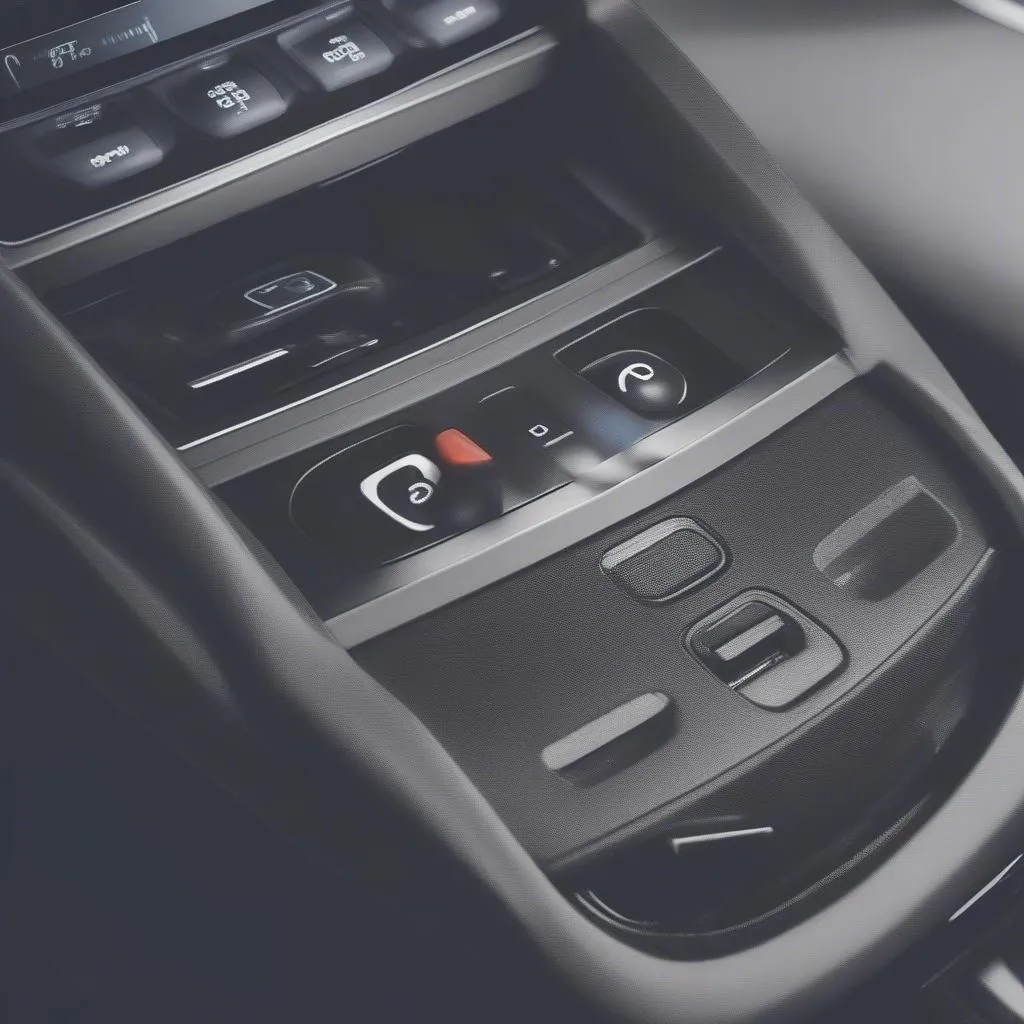Imagine you’re driving your beloved Lexus down the highway, enjoying the smooth ride and luxurious interior. Suddenly, the engine light flashes on, and your heart drops. You pull over, wondering what could be wrong and how to fix it. You might be thinking, “Does my Lexus have an OBD port? Can I diagnose this issue myself?” This is where the OBD port, or On-Board Diagnostics port, comes into play.
Why is the OBD Port Important?
The OBD port is essentially a gateway to your car’s computer system. It allows you to access and read diagnostic trouble codes (DTCs), which are essentially error messages generated by your car’s computer. These codes can reveal a wide range of issues, from a loose gas cap to more serious problems with your engine or transmission.
Importance from a Mechanic’s Perspective:
For mechanics, the OBD port is invaluable. It allows them to quickly and efficiently diagnose problems, saving time and money for both the mechanic and the car owner. By connecting a diagnostic scanner to the OBD port, a mechanic can retrieve DTCs, analyze sensor data, and even perform live tests on various components.
Importance from a Technical Perspective:
The OBD port is a crucial component of modern vehicles. It plays a vital role in emissions control, ensuring your car meets regulatory standards. It also helps in improving fuel efficiency and overall vehicle performance.
Does My Lexus Have an OBD Port?
The good news is that almost all modern Lexus vehicles are equipped with an OBD port. It’s standard practice for car manufacturers, including Lexus, to include this crucial diagnostic tool in their vehicles.
Where is the OBD Port Located on a Lexus?
The OBD port is typically located under the dashboard, near the steering column. However, the exact location can vary depending on the Lexus model and year. If you can’t find it, consult your owner’s manual or search online for a specific guide for your Lexus model.
Does the OBD Port’s Location Vary Between Lexus Models?
Yes, the OBD port location can vary slightly between different Lexus models. For example, some older models might have the OBD port under the center console, while newer models may have it under the dashboard, near the steering wheel.
What are the Uses of an OBD Port in a Lexus?
The OBD port is a versatile tool for Lexus owners and mechanics alike:
- Diagnostic Trouble Code Retrieval: Retrieve error codes from your car’s computer, providing valuable insights into potential issues.
- Live Data Monitoring: Monitor real-time data from various sensors in your car, such as engine speed, fuel pressure, and temperature.
- Vehicle System Tests: Perform tests on various components, such as the engine, transmission, and ABS system.
- Emissions Control: Monitor and control emissions to ensure compliance with regulations.
- Fuel Efficiency: Optimize fuel consumption by analyzing driving patterns and suggesting ways to improve.
How to Use the OBD Port on Your Lexus
You can use the OBD port for various purposes, from basic code reading to more advanced diagnostics.
Using a Basic OBD Scanner:
If you’re looking for a simple solution to read DTCs, a basic OBD scanner is all you need. These devices are readily available online and at auto parts stores, and they’re generally affordable. Just plug the scanner into the OBD port and follow the on-screen instructions.
Using a More Advanced Scanner:
For more advanced diagnostics, consider using a professional-grade OBD scanner. These scanners offer a wider range of features, such as live data monitoring, advanced code analysis, and even the ability to clear DTCs.
Using a Smartphone App:
There are several smartphone apps available that can connect to the OBD port via a Bluetooth adapter. These apps provide a user-friendly interface and can offer a wide range of features, including DTC reading, live data monitoring, and even performance tuning.
Tips for Using the OBD Port on Your Lexus
- Consult Your Owner’s Manual: It’s always a good idea to consult your owner’s manual for specific instructions on accessing and using the OBD port on your Lexus.
- Choose the Right Scanner: Select a scanner that’s compatible with your Lexus model and the level of diagnostics you need.
- Seek Professional Help: If you’re unsure about using the OBD port or if you encounter any error codes you don’t understand, seek help from a qualified mechanic.
Frequently Asked Questions
Does my Lexus have an OBD II port?
Yes, all modern Lexus vehicles are equipped with an OBD II port, which is the standard for modern vehicles.
What are the benefits of using an OBD scanner?
Using an OBD scanner allows you to diagnose issues with your Lexus, understand potential problems, and potentially save money on repairs.
Can I use a generic OBD scanner on my Lexus?
Yes, most generic OBD scanners will work on Lexus vehicles, but some advanced features may not be compatible with all Lexus models.
What are some common OBD codes on a Lexus?
Some common OBD codes on Lexus vehicles include P0171 (System Too Lean), P0300 (Multiple Cylinder Misfire), and P0420 (Catalyst System Efficiency Below Threshold).
Where can I get a Lexus OBD scanner?
You can purchase OBD scanners online, at auto parts stores, and at some electronics stores.
Conclusion
The OBD port is a valuable tool for Lexus owners, providing a window into the heart of your car’s computer system. By understanding its function and using it appropriately, you can gain insights into your vehicle’s health, potentially identify issues early, and save money on repairs. Remember, if you’re not comfortable using an OBD scanner, don’t hesitate to consult a qualified mechanic.
Don’t hesitate to contact us via Whatsapp: +84767531508 if you need further assistance. We offer 24/7 support for all your Lexus diagnostic needs.
 Lexus OBD Port
Lexus OBD Port
 Lexus OBD Scanner
Lexus OBD Scanner